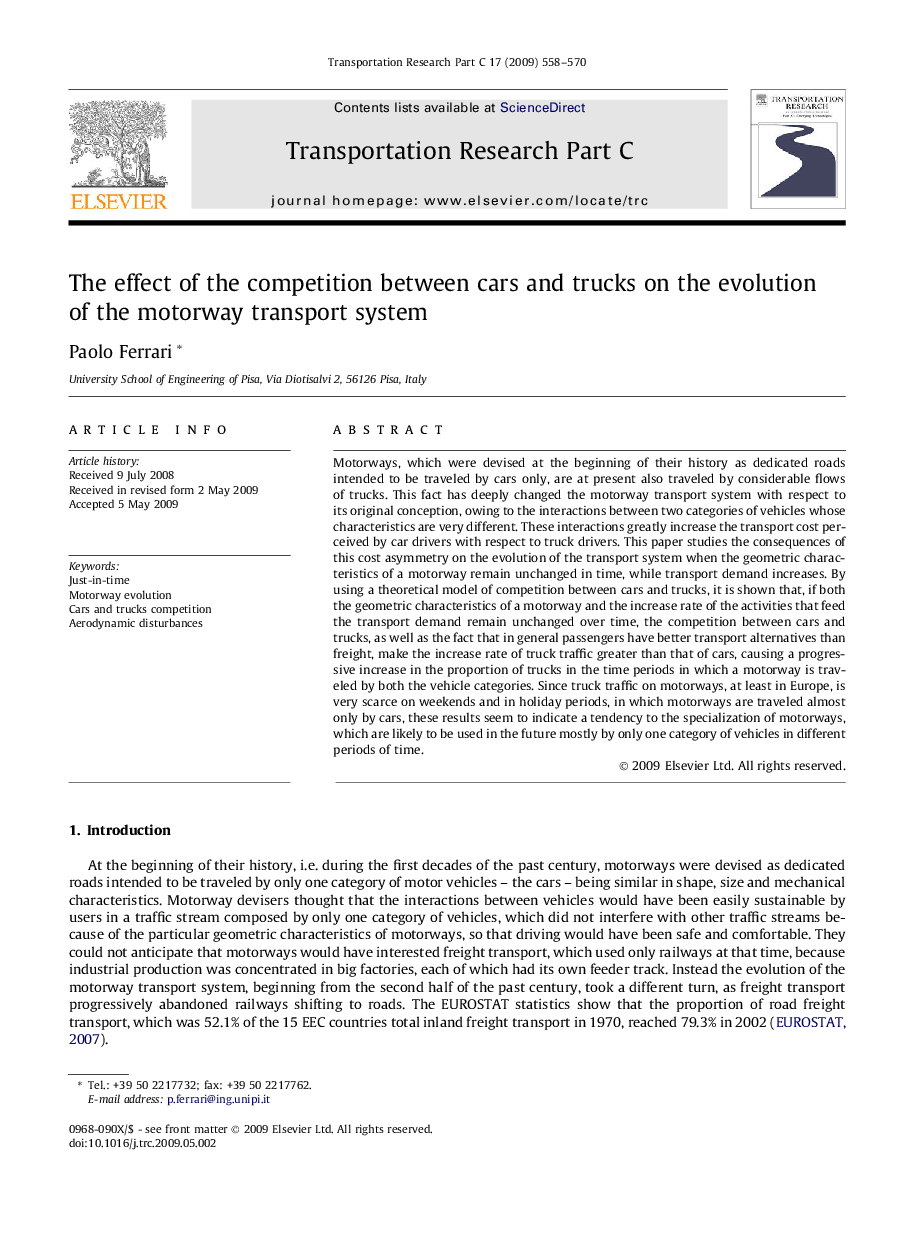| Article ID | Journal | Published Year | Pages | File Type |
|---|---|---|---|---|
| 526638 | Transportation Research Part C: Emerging Technologies | 2009 | 13 Pages |
Motorways, which were devised at the beginning of their history as dedicated roads intended to be traveled by cars only, are at present also traveled by considerable flows of trucks. This fact has deeply changed the motorway transport system with respect to its original conception, owing to the interactions between two categories of vehicles whose characteristics are very different. These interactions greatly increase the transport cost perceived by car drivers with respect to truck drivers. This paper studies the consequences of this cost asymmetry on the evolution of the transport system when the geometric characteristics of a motorway remain unchanged in time, while transport demand increases. By using a theoretical model of competition between cars and trucks, it is shown that, if both the geometric characteristics of a motorway and the increase rate of the activities that feed the transport demand remain unchanged over time, the competition between cars and trucks, as well as the fact that in general passengers have better transport alternatives than freight, make the increase rate of truck traffic greater than that of cars, causing a progressive increase in the proportion of trucks in the time periods in which a motorway is traveled by both the vehicle categories. Since truck traffic on motorways, at least in Europe, is very scarce on weekends and in holiday periods, in which motorways are traveled almost only by cars, these results seem to indicate a tendency to the specialization of motorways, which are likely to be used in the future mostly by only one category of vehicles in different periods of time.
